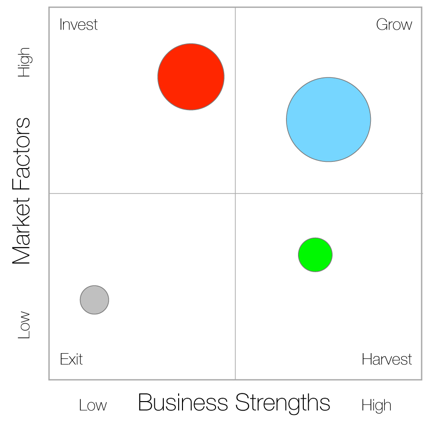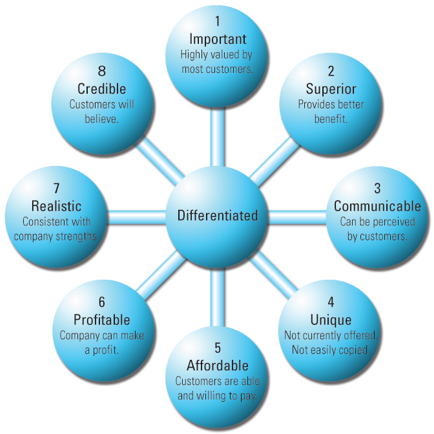BRAND VALUE STRATEGY
Strategy Process Introduction
CHC’s strategy process is designed to leave no stone unturned as it progresses through a methodical sequential analysis to build the foundation upon which your brand value can be constructed, maintained or extended.
Our process may be applied at many levels within a company, from full corporate strategy to divisional strategy to brand-level, segment-level or even product-level challenges.
Our process is:
● Customizable to any situation
● Based on time-tested approaches developed by the world's top academic strategists
● A quantified approach, which helps remove subjectivity and reduces risk via
numerical documentation and ranking of inputs
● Objective (completely eliminates "hand-waving" arguments)
● A lasting platform for discussion and debate within a rigorous proven
strategic framework
The output is a complete strategy that captures:
● All high-level strategic elements (such as targeting, position goal and sharp,
rigorously-tested differentiation)
● Strategic objectives (SOs) that define major steps required to achieve
success
● Tactical implementation plans (TIPs) that define actions, assignees and
timelines so that the SOs become actionable and are ensured of
implementation
● A control plan to provide for management of strategy and periodic review of
all TIP’s, and to allow for minor adjustments as new information becomes
available or in response to changes in the environment
Strategy Process and Details
The following are the key steps in the process:
● Environmental Analysis
■ Four environmental analyses based on classic SWOT (2 internal assessments:
Strengths, Weaknesses; 2 external assessments: Opportunities, Threats)
■ This defines the brand, market and competitive landscape, i.e. What we have to work
with and the environment in which we must succeed
● Segmentation – defines potential target segments
● Define a preliminary offer concept (required for other analyses)
● Segment Evaluation – via Market Factors/Business Strengths analysis
■ Market factors evaluates the attractiveness of a segment via:
◆ Profitability
◆ TAM (Total Available Market) size
◆ TAM growth rate
◆ Competitive intensity
■ Business strengths evaluates ability of the brand to succeed via:
◆ Ability to deliver the needed offer
◆ Ability to provide the appropriate quality level
◆ Ability of company to be profitable (just because a segment is profitable does not
mean any company can be profitable because different companies have different
cost basis)
◆ Fit to sales channel: Can the segment be practically marketed to?
◆ Strategic fit: Does the segment have synergies with other potential target
segments?
■ Categorize each segment into one of four macro strategic approaches:
◆ Exit (or do not approach/enter the segment)
◆ Invest (improve business strengths to better serve the segment)
◆ Grow (just sell to the segment; invest in more sales people; increased capacity and
so on)
◆ Harvest (take what comes, but spend no time, energy or money)
■ Note: Business Strengths can be improved via investment/changing approaches, etc.,
but market factors cannot be changed.

● Targeting
■ Choose specific segments to target (based on the market factors business strengths
analysis)
■ Targets are generally in the invest or grow macro-strategy quadrants
● Develop potential position goals and supporting initial offers
■ This done through brainstorming
■ “Position goal” means the desired perception of the brand in the minds of consumers
● Evaluate differentiability of the offers via the classic 8-point criteria of:
■ Important (Highly valued by most customers)
■ Superior (Provides a better benefit)
■ Communicable (Can be perceived by customers)
■ Unique (Not currently offered; not easily copied)
■ Affordable (Customers are able and willing to pay)
■ Profitable (Company can make a profit)
■ Realistic (Consistent with company/ brand strengths)
■ Credible (Customers will believe)

● Select the position goal and the supporting offers
● Select certain attributes of the offer to be primarily communicated – preferably limited to a
small number
● Develop the MarCom plan to communicate the selected-offer differentiated attributes
■ Includes WHAT to communicate
■ Includes HOW to communicate
■ Advertising, PR, Promotion etc.
● Develop strategic objectives – SO's (these are very often dominated by internal activities
to improve business strengths)
■ The various analyses above create long lists of issues. For example the threats
analysis creates a list of existing or potential threats. Each threat is numerically ranked
for “likelihood of occurrence” and “severity of impact” if it does occur
■ These numerical factors are multiplied together to create an overall ranking
■ The overall ranking is then used to create some priorities with top priority items being
finally addressed via strategic objectives
● Develop tactical implementation plans – TIP's for each SO (This is the who does what,
when, where and how – basically a project management plan with people assigned and
accountable to complete actions.)
● Develop the control plan – to ensure actions are completed on time, people are
accountable and that adjustments can be made when market factors change or when new
information becomes available – if the above work is done properly adjustments are
usually minor for most businesses.
● Full strategy reassessment/refresh – usually every three years is reasonable for most
businesses (excluding online businesses where the environment is in rapid flux).
CHC’s strategy process executes all of the elements above in close cooperation with your knowledgeable team members. We bring the system and the discipline while we rely on the industry knowledge of your people for some of the insightful and detailed inputs.
We never “tell” a client what to do. Instead we bring the right answers to the surface in a structured manner consistent with sound and proven strategic principles.
With quality input, this approach always works.


